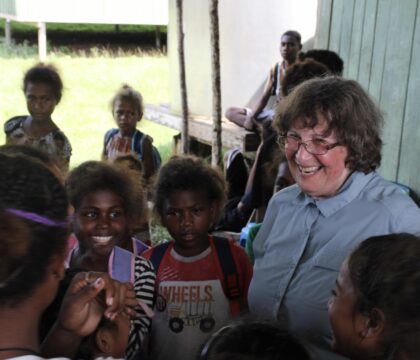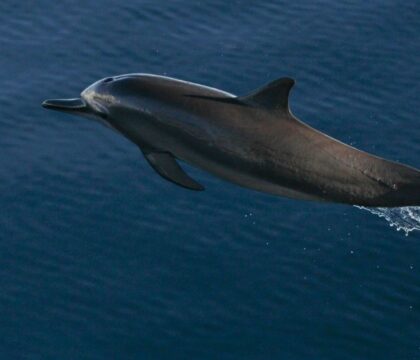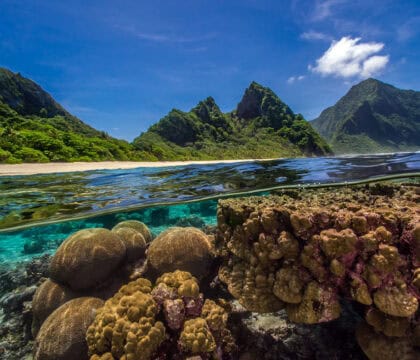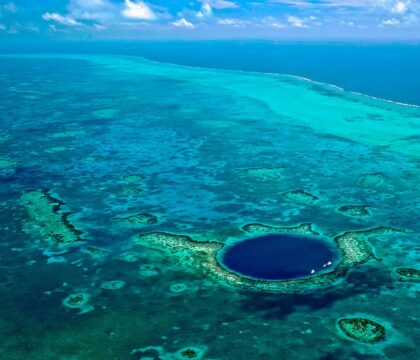June 6, 2015 • Trip Reports
2014 marked the start of a new adventure: I am the official
Artist-In-Residence with Oceanic Society! Founded in 1969, Oceanic Society is the oldest ocean conservation non-profit in America, focused on using the experience of travel in nature as a tool to deepen the connections between people and the natural world. Their progressive leadership has introduced two initiatives in 2014: to address plastic pollution and to promote art as a conservation tool.
My first trip as Artist-In-Residence was co-leading the
10-day Bali to Komodo expedition on the liveaboard schooner Sea Safari VII with naturalist and Oceanic Society’s director of eco-travel programs Wayne Sentman. My role as ‘Plastic Interpreter’ meant that, given the plastic plague in Indonesia, like most island nations, my work was cut out for me.
Our 10 day voyage took us to remote large and tiny islands sprinkled between Bali and Komodo: Lombok, Moyo, Gili, Banta, Satonda. We usually spent 5-6 hours in the water each day, snorkeling through the underwater marvels that are Indonesia. My fellow voyagers were spying and photographing fish and sea creatures for Wayne to identify with his encyclopedic knowledge of Indonesian flora and fauna, and I took thousands of photos of the teeming life of the coralline ecosystem.
Coral gardens of indescribable beauty in multitudinous forms and textures, myriad fish in ten thousand hues, cuttlefish, sea snakes, nudibranchs, crawling oddities like the feather sea star (looking like a blood-red feather duster on spider legs), echinoderms, “sea stomachs” (actually tunicates) and more!
A manta ray. A few small sharks, whose general absence was troubling: where there should have been many sharks, they were scarce, victims of nefarious shark finning. And areas where luxurious coral gardens had been blasted into rubble field thanks to the insanity of dynamite fishing.
But even amid the destruction, there are signs of hope: new coral heads budding out of the rubble with the attendant sea life they attract. I am thankful for the ingenuity and creativity of nature, whose regenerative force builds anew in a field of destruction.
I spent my time diving down to remove sunken plastic (not all plastic floats) and cut fishing line and nets free from coral. Some plastic had been underwater so long it had been colonized and encrusted with life, pieces that had so many lives attached I left them in situ. Soon, many of the fellow voyagers were collecting underwater plastic along with me.
80% of ocean plastic originates on land, and has an impacts on wildlife there as well: this mother and baby macaque on Lombok are both chewing on plastic, the mother scavenging food that looked like carrots packaged in plastic while the baby makes a plaything and teething device out of a plastic bottle.
A highlight of the trip was Komodo Island, the only place in the world home to the living dinosaurs, the Komodo dragon. Truly fearsome, venomous, these very large and powerful predators will cannabalize their own young, and lay in wait, camouflaged in the dust, for the unaware deer—or human—to stumble on them. Fangs rip flesh and inject venom, but the smart reptiles save their energy and wait for death by infection to overcome their victims. We saw dozens upon dozens of the creatures, a rare day indeed that included witnessing a mating attempt, a gathering of adults and young at a water hole, and a scrabble over the remnant ribcage of the morning’s deer kill. Guides and visitors watchfully hike through the dragons’ land: there are no cages, barriers or protection, and attacks do occur: last year 3 guides had been bitten as dragons entered their offices and attacked. In the presence of these creatures, in all their ancient-ness, their otherness, I experienced spine-tingling awe.
And then I noticed a bright blue piece of plastic enmeshed in a compressed, elongated ball of matter. I realized it was a 5-gallon plastic bottle cap of the kind that all the cruise ships carry as their fresh water stores. It had been eaten, swallowed and regurgitated by a dragon in a ‘bolus’, just as albatross, owls and other birds do to get rid of undigestible matter they have eaten. Shockingly, even the Komodo dragons are eating and swallowing plastic, creatures whose evolutionary path leads as far back as the fossil fuel that the plastic is made from.
I made many beach landings, usually by swimming from the Sea Safari, to survey and clean the remote island beaches. Some of them were completely inundated like Gili Island. I gathered as much as I could swim with and bundled it all together or utilized the large plastic mesh produce bags that appeared everywhere, even underwater, where they readily break up into micro-plastic.
My most heartwarming moment came when I was joined by a half dozen beautiful children as I cleaned their island of Moyo. They saw what I was doing and enthusiastically joined me. It didn’t matter that we spoke not a word of each other’s languages. But Amir, our Balinese naturalist guide, was able to give them a spontaneous environmental lesson about plastic’s dangers for the sea. Amir has been acting as a plastic warrior for years, and our being together on this expedition was providential. He is now the newest member of the
Drifters Project team.
Indonesia is a place of untold physical beauty alongside the abundant problems of a developing country. But there is action underway: a plastic bag ban on Bali is well on its way to becoming a reality, started by
a group of local and international children in Denpasar. You can help them by signing their petition here. I am sending Amir 100 stainless steel straws to begin the conversation with Sea Safari and other tour companies to replace the plastic straws on board ships. And Oceanic Society is looking to incorporate a ‘Plastic Free Travel Kit’ as a perk for their expedition participants. Little by little, my vision of plastic free islands can become reality.




